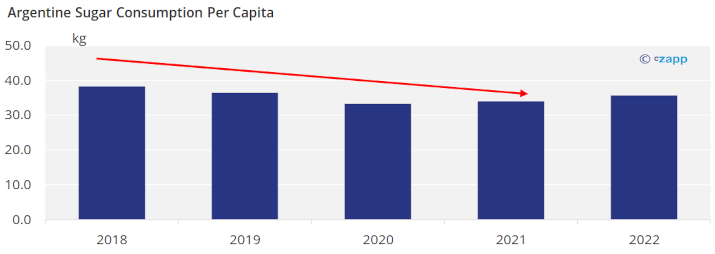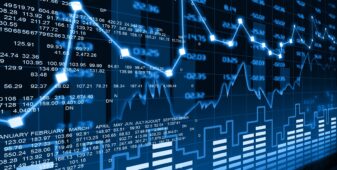Insight Focus
- Argentina from world power to receiving bailouts.
- Argentine sugar consumption increased during the 1998 economic crisis.
- Current inflation decreases Argentine sugar consumption.
In the early twentieth century, Argentina was considered one of the wealthiest countries in the world. In 1913, Argentina had a higher GDP per capita than France and Germany. Argentina’s high volumes of beef and grain exports gave them a spot on the global stage. Then following the Great Depression, unstable governments and overly ambitious social programs, Argentina’s economic growth stagnated. The last two Argentine economic crises have had opposite effects on domestic sugar consumption.
Argentine Great Depression 1998-2002
In 1998 Argentina fell into a four-year economic depression. During this period, the Argentine economy contracted by 28%. The fallout from the Asian Financial Crisis and poor fiscal policy from Argentine legislators led to the Argentine Great Depression. However, sugar consumption in Argentina did not decrease during this crisis.
Domestic sugar prices in Argentina even fell during this crisis. Domestic prices were low due to low international prices caused by a large Brazilian crop. Also in 1999, Argentina had strong carry-over of stock from the previous harvest due to favourable weather conditions producing a large crop.
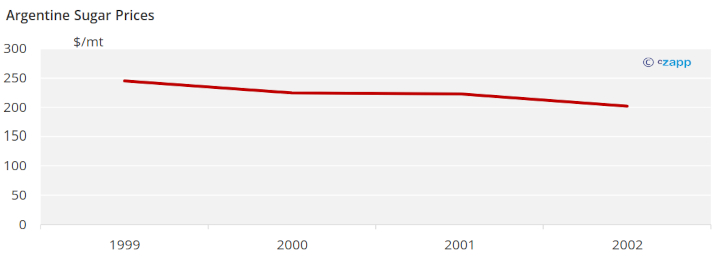
Argentine sugar consumption per capita increased by 6% between the first and second years of the crisis. Then between the second and fourth years of the crisis, sugar consumption per capita increased by, on average, 1.36% per year.
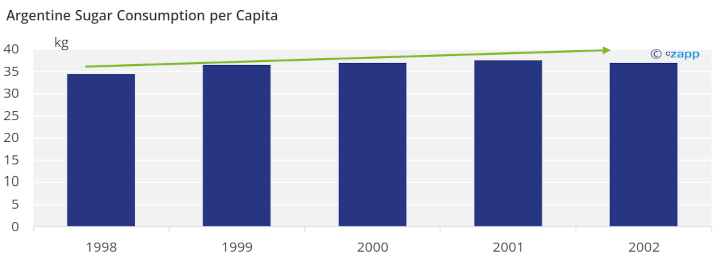
Current Argentine Economic Crisis
Inflation and an unstable currency have wreaked havoc on the Argentine economy over the last few years. The Argentine central bank has raised interest rates to 52% to curb the 70% inflation. This supply-side economic crisis has caused the price of many domestic goods to increase. The Argentine Consumer Price Index (CPI) has grown strongly since 2018. The CPI measures the change in prices for a market basket of consumer goods and services. CPI is compared to a base year. Any CPI level above 100 means consumer goods and services prices have increased (for example, a CPI of 110 means a 10% rise in prices). The Argentine CPI increased in 2008 from 177.5 to 272 in 2022.
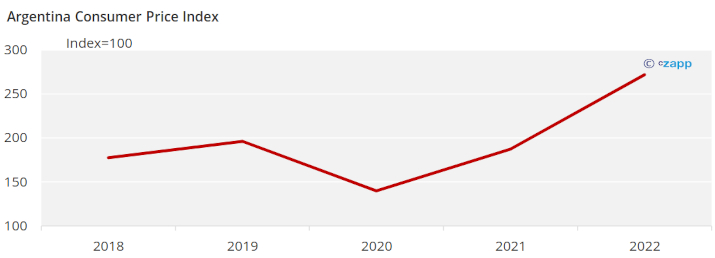
Source: Federal Reserve Economic Data
The Argentine government put price ceilings on various foods but not on sugar. Sugar prices grew exponentially between 2018 and 2022. The Argentine sugar CPI increased from 122.8 (22.28% price increase) to 1034 (134% price increase).

This policy led to a decline in domestic sugar consumption. Sugar consumption in Argentina decreased by 5% between 2018 and 2019 and a further 9% between 2019 and 2020. Sugar consumption levels increased slightly between 2021 and 2022 to pre-pandemic levels but are still significantly less than 2018’s consumption levels.
